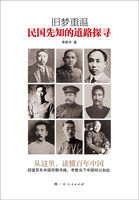THE AMOUNT OF FINE EARTH BROUGHT UP BY WORMS TO THE SURFACE.
Rate at which various objects strewed on the surface of grass- fields are covered up by the castings of worms--The burial of a paved path--The slow subsidence of great stones left on the surface--The number of worms which live within a given space--The weight of earth ejected from a burrow, and from all the burrows within a given space--The thickness of the layer of mould which the castings on a given space would form within a given time if uniformly spread out--The slow rate at which mould can increase to a great thickness--Conclusion.
We now come to the more immediate subject of this volume, namely, the amount of earth which is brought up by worms from beneath the surface, and is afterwards spread out more or less completely by the rain and wind.The amount can be judged of by two methods,--by the rate at which objects left on the surface are buried, and more accurately by weighing the quantity brought up within a given time.We will begin with the first method, as it was first followed.
Near Mael Hall in Staffordshire, quick-lime had been spread about the year 1827 thickly over a field of good pasture-land, which had not since been ploughed.Some square holes were dug in this field in the beginning of October 1837; and the sections showed a layer of turf, formed by the matted roots of the grasses, 0.5 inch in thickness, beneath which, at a depth of 2.5 inches (or 3 inches from the surface), a layer of the lime in powder or in small lumps could be distinctly seen running all round the vertical sides of the holes.The soil beneath the layer of lime was either gravelly or of a coarse sandy nature, and differed considerably in appearance from the overlying dark-coloured fine mould.Coal- cinders had been spread over a part of this same field either in the year 1833 or 1834; and when the above holes were dug, that is after an interval of 3 or 4 years, the cinders formed a line of black spots round the holes, at a depthof 1 inch beneath the surface, parallel to and above the white layer of lime.Over another part of this field cinders had been strewed, only about half-a- year before, and these either still lay on the surface or were entangled among the roots of the grasses; and I here saw the commencement of the burying process, for worm-castings had been heaped on several of the smaller fragments.After an interval of 4.75 years this field was re- examined, and now the two layers of lime and cinders were found almost everywhere at a greater depth than before by nearly 1 inch, we will say by0.75 of an inch.Therefore mould to an average thickness of 0.22 of an inch had been annually brought up by the worms, and had been spread over the surface of this field.
Coal-cinders had been strewed over another field, at a date which could not be positively ascertained, so thickly that they formed (October, 1837) a layer, 1 inch in thickness at a depth of about 3 inches from the surface.The layer was so continuous that the over-lying dark vegetable mould was connected with the sub-soil of red clay only by the roots of the grasses; and when these were broken, the mould and the red clay fell apart.In a third field, on which coal-cinders and burnt marl had been strewed several times at unknown dates, holes were dug in 1842; and a layer of cinders could be traced at a depth of 3.5 inches, beneath which at a depth of 9.5 inches from the surface there was a line of cinders together with burnt marl.On the sides of one hole there were two layers of cinders, at 2 and 3.5 inches beneath the surface; and below them at a depth in parts of 9.5, and in other parts of 10.5 inches there were fragments of burnt marl.In a fourth field two layers of lime, one above the other, could be distinctly traced, and beneath them a layer of cinders and burnt marl at a depth of from 10 to 12 inches below the surface.
A piece of waste, swampy land was enclosed, drained, ploughed, harrowed and thickly covered in the year 1822 with burnt marl and cinders.It was sowed with grass seeds, and now supports a tolerably good but coarse pasture.Holes were dug in this field in 1837, or 15 years after its reclamation, and we see in the accompanying diagram (Fig.5), reduced to half of the natural scale, that the turf was 1 inch thick, beneath which there was a layer of vegetable mould 2.5 inches thick.This layer did not containfragments of any kind; but beneath it there was a layer of mould, 1.5 inch in thickness, full of fragments of burnt marl, conspicuous from their red colour, one of which near the bottom was an inch in length; and other fragments of coal-cinders together with a few white quartz pebbles.Beneath this layer and at a depth of 4.5 inches from the surface, the original black, peaty, sandy soil with a few quartz pebbles was encountered.Here therefore the fragments of burnt marl and cinders had been covered in the course of 15 years by a layer of fine vegetable mould, only 2.5 inches in thickness, excluding the turf.Six and a half years subsequently this field was re-examined, and the fragments were now found at from 4 to 5 inches beneath the surface.So that in this interval of6.5 years, about 1.5 inch of mould had been added to the superficial layer.I am surprised that a greater quantity had not been brought up during the whole 21.5 years, for in the closely underlying black, peaty soil there were many worms.It is, however, probable that formerly, whilst the land remained poor, worms were scanty; and the mould would then have accumulated slowly.The average annual increase of thickness for the whole period is 0.19 of an inch.














